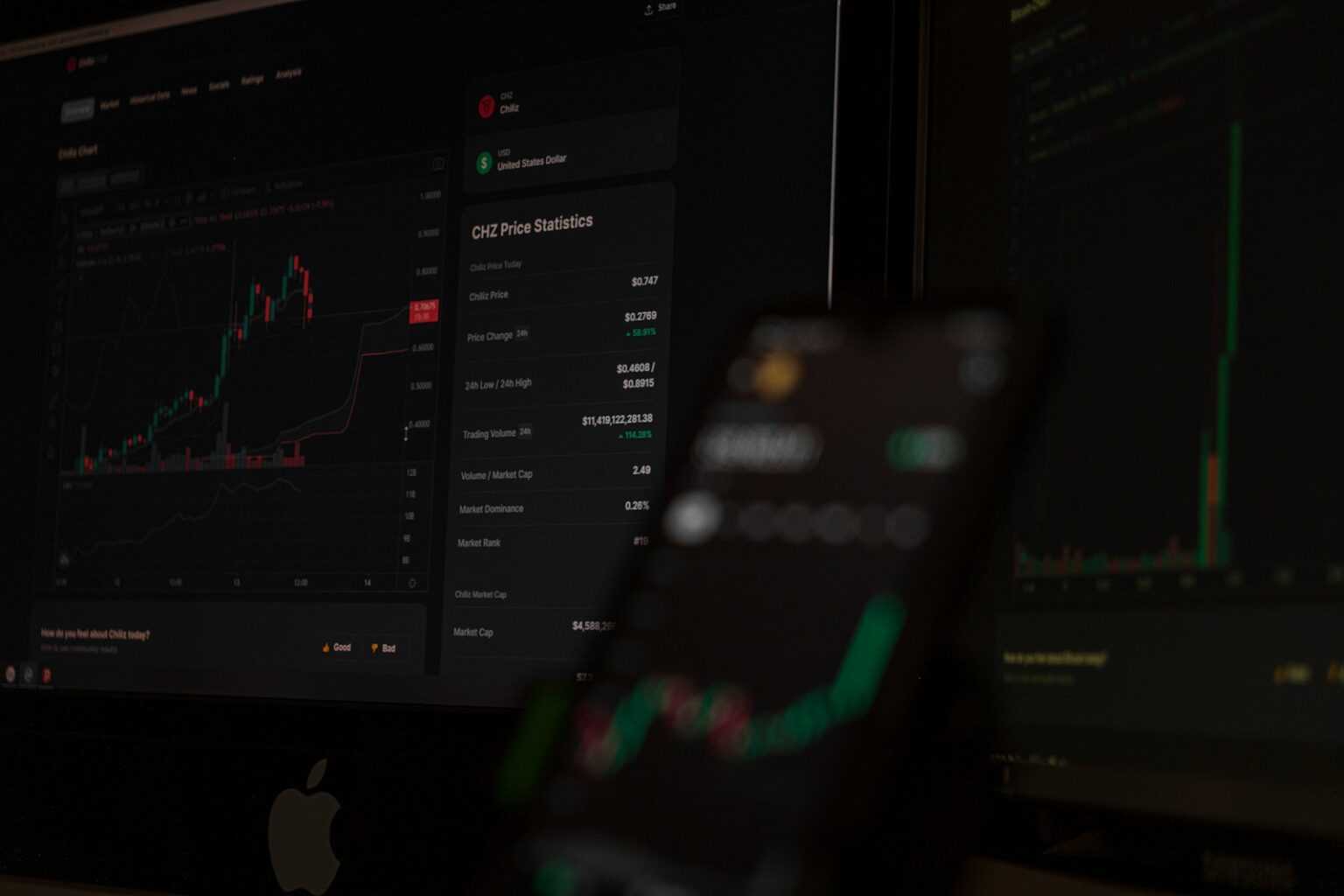Prioritize focused examination of each market vertical by identifying key drivers behind recent growth patterns. Detailed scrutiny of sector-specific metrics reveals which subsegments lead expansion, enabling precise forecasting based on quantifiable trends.
Utilize tailored frameworks to assess performance indicators unique to individual industries, avoiding generic approaches that dilute insights. This method uncovers nuanced competitive dynamics and highlights emerging opportunities within specialized fields.
Tracking technological adoption rates, regulatory changes, and consumer behavior shifts within distinct branches sharpens understanding of evolving conditions. Such targeted assessment supports strategic decision-making aligned with concrete evidence rather than broad assumptions.
Token Research: Targeted Examination of Cryptocurrency Verticals
Focused scrutiny of individual verticals reveals distinct growth trajectories driven by technical innovation and market demand. For instance, decentralized finance (DeFi) protocols demonstrate exponential expansion due to composability and yield generation mechanisms, contrasting with more stable yet slower-growing sectors like payment tokens. This precise differentiation enables sharper forecasting and strategic positioning within the blockchain ecosystem.
Monitoring key trends such as layer-2 scaling adoption or interoperability advancements uncovers competitive advantages among projects. Layer-2 solutions, exemplified by Optimistic Rollups and zk-Rollups, reduce transaction costs while maintaining security guarantees of base layers. Observing these shifts permits an informed interpretation of which subdomains are primed for accelerated development versus those facing saturation or regulatory pressure.
Comparative Study of Market Dynamics Across Blockchain Verticals
A detailed comparison highlights how liquidity provision metrics, user retention rates, and protocol upgrades influence sector-specific potential. DeFi platforms like Uniswap consistently report high total value locked (TVL), signaling robust user engagement and capital efficiency. Conversely, non-fungible token (NFT) marketplaces experience episodic activity spikes tied to cultural phenomena rather than sustained growth patterns, suggesting cyclical behavior requiring cautious evaluation.
Competition intensity varies significantly between domains; for example, layer-1 blockchains contend over throughput and decentralization trade-offs using novel consensus algorithms such as Proof-of-Stake variants or DAG structures. Evaluating these technical differentiators alongside developer community size offers a multi-dimensional perspective on long-term viability versus short-term hype cycles.
- Growth indicators: TVL trends, active addresses, transaction volumes
- Technical innovations: Consensus improvements, scalability techniques
- User behavior patterns: Retention rates, engagement frequency
The integration of cross-chain communication protocols presents another axis for comparative assessment. Projects implementing bridges or wrapped asset standards enable diversified asset flows that can catalyze network effects across ecosystems. Experimental validation through testnet deployments and stress testing exposes resilience levels critical to sustainable expansion strategies in specific verticals.
This systematic approach to dissecting blockchain subsectors fosters experimental inquiry into how technical design choices correlate with measurable performance outcomes. By iteratively assessing emerging data points against hypotheses about user adoption and protocol robustness, researchers build confidence in projecting future developments within tightly defined market segments.
Identifying Key Metrics for Sector-Specific Performance
Pinpointing critical indicators tailored to a specific vertical requires focusing on measurable factors that reflect operational success and competitive positioning. Begin with quantifiable data points such as market share fluctuations, transaction throughput, or user adoption rates within the chosen field. For example, in blockchain-based payment networks, analyzing average transaction confirmation time alongside network fees offers insight into scalability and cost-efficiency dynamics.
Understanding prevailing patterns within the market segment involves tracking shifts in consumer behavior, technological upgrades, and regulatory developments. Detecting emerging trends–like DeFi protocol growth rates or NFT trading volumes–enables anticipation of changes affecting performance outcomes. Such trending metrics reveal where innovation concentrates and how incumbents adjust their strategies amid evolving demand.
Core Indicators Across Different Verticals
Competition assessment demands examining both quantitative benchmarks and qualitative aspects unique to each field. For instance, in cryptocurrency mining operations, hash rate distribution among participants and energy consumption metrics provide a dual perspective on resource efficiency and decentralization levels. These measurements help differentiate dominant players from smaller entities while highlighting environmental impact considerations.
Evaluation extends beyond raw numbers by integrating contextual understanding of sector-specific challenges. In supply chain blockchains, tracking smart contract execution success rates coupled with latency figures exposes bottlenecks affecting reliability. Incorporating KPIs like interoperability scores between platforms also sheds light on ecosystem cohesiveness–a crucial factor influencing adoption velocity.
- User engagement metrics: daily active users (DAU), retention rate variations
- Transaction statistics: volume per day/week/month; average value transferred
- Network health parameters: node count stability; consensus mechanism efficiency
- Financial performance: revenue streams derived from tokenomics or service fees
- Security indicators: frequency of breaches or vulnerability disclosures over time
Diverse technical case studies illustrate these principles effectively. Ethereum’s transition to proof-of-stake introduced new evaluation criteria such as validator uptime and staking participation percentages, which contrast sharply with proof-of-work metrics emphasizing hardware capabilities. Monitoring these parameters experimentally uncovers nuanced trade-offs between energy use and security assurances across blockchain categories.
The synthesis of data-driven insights with systematic experimentation fosters robust comprehension of vertical-specific dynamics. Encouraging practitioners to formulate hypotheses regarding metric interrelations–such as correlating token velocity with user retention–facilitates deeper exploration through iterative testing. This approach transforms abstract concepts into tangible investigations that progressively refine understanding of competitive positioning within digital ecosystems.
Comparing Industry Growth Drivers
Identifying growth factors within various economic verticals requires a focused approach on unique market dynamics and competitive pressures. For example, the fintech domain sees rapid expansion driven by regulatory adaptation and consumer demand for decentralized finance solutions, contrasting with the energy sector where innovation is propelled primarily by sustainability mandates and technological advancements in smart grids. This disparity highlights how specific forces govern progress distinctly across domains.
Competition intensity varies notably between segments, influencing strategic investment and development timelines. In blockchain infrastructure, fierce rivalry among protocol developers accelerates scalability breakthroughs, as observed in Layer 1 platforms optimizing consensus algorithms for higher throughput. Conversely, sectors such as supply chain logistics prioritize integration capabilities and traceability standards over raw performance metrics, demonstrating that growth catalysts depend heavily on targeted operational requirements.
Technical Patterns Shaping Expansion
Emerging trends underscore how tailored technical innovations serve as primary growth drivers within different fields. Decentralized applications (dApps) thrive under environments encouraging composability and interoperability; Ethereum’s evolution through EIPs exemplifies methodical upgrades facilitating this. Meanwhile, healthcare technology advances stem from stringent data privacy protocols combined with AI-driven diagnostics–each requiring distinct validation frameworks to ensure compliance and efficacy.
Quantitative assessment of these verticals benefits from systematic benchmarking against key performance indicators relevant to their ecosystems. Metrics such as transaction finality time in financial networks or carbon footprint reduction rates in cleantech projects provide measurable insights into developmental velocity. Encouraging experimental methodologies enables practitioners to isolate variables–be it protocol enhancements or regulatory shifts–and quantify their direct impact on market penetration and user adoption patterns.
Evaluating Competitive Environments in Blockchain Verticals
Precise assessment of competitive dynamics within specific blockchain verticals requires targeted examination of market participants, technological maturity, and adoption rates. Quantitative metrics such as transaction throughput, consensus mechanisms efficiency, and network decentralization levels provide measurable indicators to differentiate contenders. For example, comparing the throughput of Ethereum’s layer-1 with emerging layer-2 scaling solutions like Optimism reveals shifts in performance trends influencing user preference and developer activity.
Identification of key rivals involves dissecting their strategic positioning based on value propositions tailored to niche applications. In DeFi protocols, assessing liquidity aggregation methods or oracle integration accuracy offers insight into competitive advantages. Such task-specific scrutiny exposes not only direct competitors but also substitutive technologies that may redefine sector boundaries over time.
Technical Parameters Guiding Market Positioning
Evaluation extends beyond surface-level comparisons by integrating blockchain-specific benchmarks such as smart contract composability and interoperability standards adherence. The rise of cross-chain bridges illustrates how projects leveraging seamless asset transfers can alter competitive balances within financial primitives or NFT marketplaces. Monitoring protocol upgrade frequency alongside security audit rigor further informs about robustness and innovation velocity.
The adoption curve of emerging consensus algorithms–like Proof-of-Stake variants versus traditional Proof-of-Work–serves as a vital indicator for understanding potential shifts in operational costs and energy consumption profiles among competing networks. These factors critically influence institutional investor engagement and regulatory acceptance, impacting long-term viability within targeted domains.
Comparative studies using data from sources such as Coin Metrics or Dune Analytics enable granular tracking of user behavior patterns and tokenomics effectiveness across platforms. Dissecting these elements helps anticipate which entities maintain sustainable growth trajectories versus those vulnerable to transient hype cycles or external shocks affecting liquidity pools or governance participation rates.
Ultimately, robust scrutiny involves layered investigation: starting from protocol-level technical attributes through ecosystem development pace down to end-user engagement metrics. Encouraging experimental replication by analyzing open-source repositories or testnet deployments cultivates deeper understanding of competitive strengths and weaknesses inherent in each technological approach. This empirical method supports informed decisions regarding investment timing or partnership opportunities within specialized blockchain sectors.
Regulatory Impacts on Cryptocurrency and Blockchain Verticals: A Forward-Looking Synthesis
Precise regulatory frameworks shape competition dynamics by either enabling or constraining growth trajectories within blockchain-related domains. Current empirical data reveal that jurisdictions with clearer compliance guidelines experience accelerated innovation cycles, particularly in DeFi and NFT verticals, where legal certainty attracts both institutional capital and technical talent.
Longitudinal trend monitoring highlights that fragmented regulatory approaches generate market segmentation, slowing cross-border interoperability and elevating operational risk. This uneven regulatory mosaic demands nuanced scrutiny to anticipate sector shifts, especially as evolving policies influence tokenomics models and consensus mechanism adoption.
Key Technical Insights and Future Pathways
- Competition Intensification: Regulatory clarity fosters a more competitive environment by lowering entry barriers for projects with robust governance architectures. For example, jurisdictions implementing sandbox regimes have catalyzed pilot programs in Layer-2 scaling solutions, accelerating throughput improvements without compromising security.
- Growth Modulation: The pace of network expansion correlates strongly with the adaptability of legal instruments to emerging protocols such as zero-knowledge proofs and decentralized autonomous organizations (DAOs). Proactive frameworks incentivize experimental deployments while maintaining consumer protection safeguards.
- Trend Integration: Effective policy alignment supports convergence between traditional finance verticals and blockchain ecosystems, facilitating hybrid products like regulated stablecoins and tokenized securities. Analytical modeling suggests these integrations enhance liquidity depth and reduce systemic volatility.
- Methodological Approaches: Employing scenario-based simulations enables stakeholders to evaluate potential regulatory impacts on transaction finality times and smart contract enforceability across multiple jurisdictions simultaneously.
The ongoing evolution of compliance standards acts as a critical variable influencing protocol selection criteria among developers. Experimental validation through testnet deployments under varying jurisdictional constraints can elucidate optimal configurations balancing decentralization with legal conformity.
In conclusion, advancing research should prioritize dynamic mapping of regulatory adaptations against innovation velocity metrics within distinct blockchain verticals. Such systematic investigation will empower informed strategic decisions that harness regulation as a catalyst rather than an impediment to sustainable ecosystem development.








